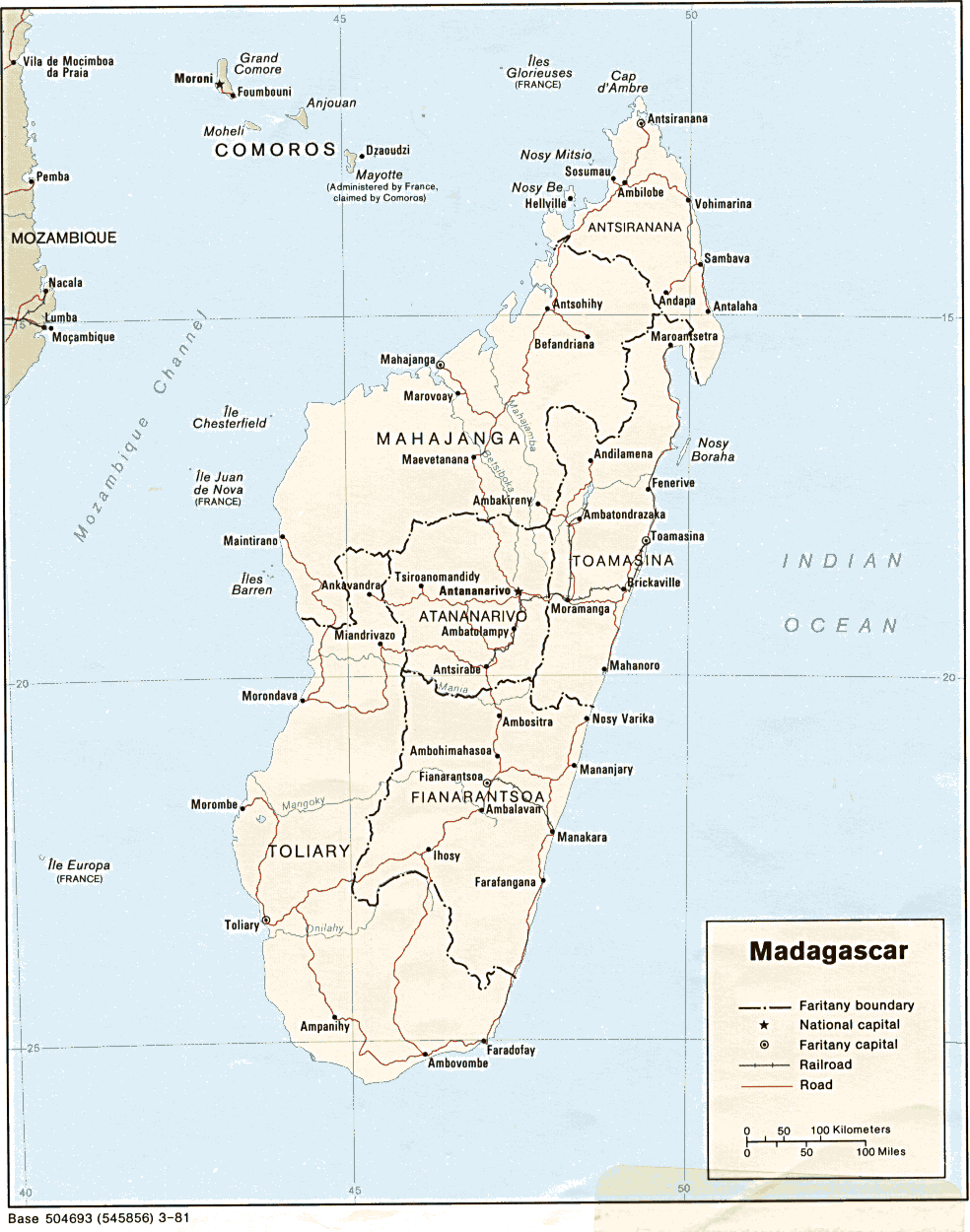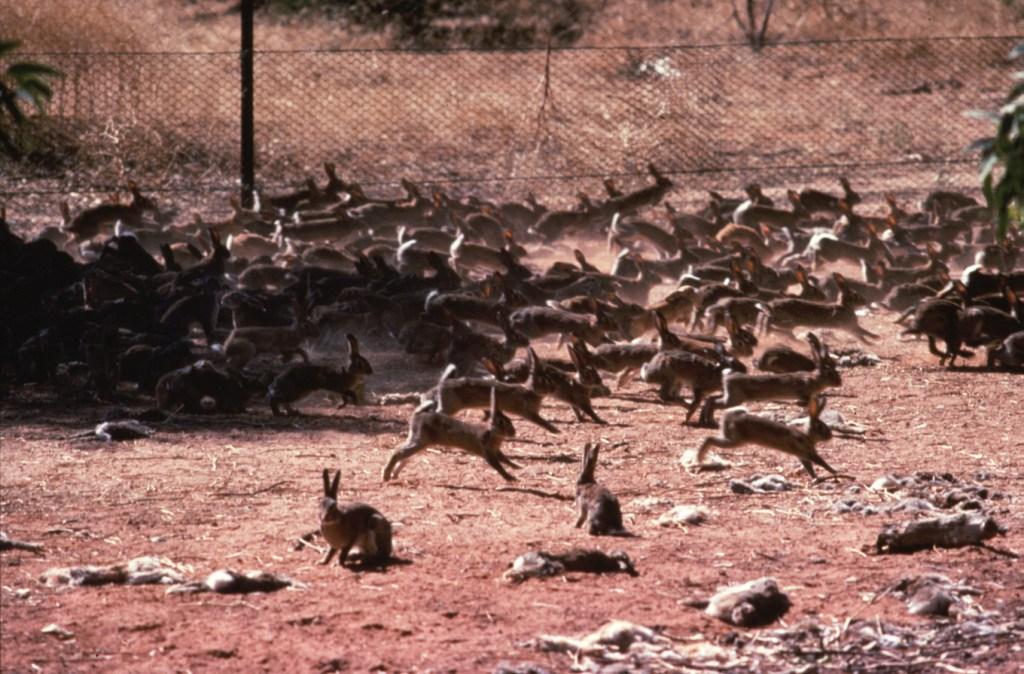This is one of those rhetorical questions that won't be answered easily, much like the chicken and the egg. Certainly, species have moved across our world's oceans for millennia- consider the founding species on Hawaii and other island habitats.
Imagine, 60 million years ago, a massive storm hits the Indian Ocean. Trees and woody debris are violently swept from the shores of modern-day Mozambique- along with their inhabitants- tiny mammals and reptiles. A few days later, the debris is deposited with a few surviving individuals onto Madagascar's rugged shoreline. This is the picture highlighted by Earth Magazine's new article on species rafting.
 |
| The thin Mozambique channel separates Madagascar and Mozambique |
Earth Magazine has just released an article on species rafting. Writer Mary Morton has interviewed several scientists regarding the idea, including OSU's own John Chapman. The article explores not only the tsunami dock and other JTMD articles, but historical rafting in its 'natural' context.
So what is natural? I sat down with Dr. Chapman to discuss this. His answer was worth considering. The events that are causing millions of tons of debris to drift across the Pacific were certainly natural, but the resulting volume of debris is not. With it comes large volumes of species that are potentially highly invasive, and likely would no have made it across the ocean- at least in significant numbers- were it not for boats, floats, and large pieces of woody and foam debris that have been created by humans. So perhaps the question isn't 'so what?' but rather 'do we want to let this happen?' Chapman also cited that our capacity to decide what is natural is really on a shorter time frame than may be applicable. Let's talk about some of the 'so what' issues that always accompany issues revolving around invasive species.
 |
| Gleneden boat, laiden with stowaway gooseneck barnacles and other species |
First, it is important to understand that marine taxonomy- the process of defining and naming oceanic species- largely died in the 20th century. Many species that we see distributed globally weren't naturally so, but rather transported via the shipping trades. However, since we don't have a picture of what ecosystems looked like before that, we perhaps have an inaccurate picture of what is 'normal'. This goes to show that JTMD is a small part of a much larger picture, as stated by the Ocean Conservancy's Nick Mallo at the Lincoln City Marine Debris Public Workshop. Additionally, we know very little about the invertebrates that inhabit our shores- barnacles, mussels, and algae, because they are difficult to identify to species level short of genetic analysis, and often overarching assumptions are made as to their identity. It's possible there are new things right under our nose, and we just haven't seen them.
 |
| What we knew about species wasn't always accurate. See a whale and orca depicted in the 16th Century 'Carta Marina' by Olaus Magnus |
The species that are washing across the Pacific have some high potential for causing problems for their destination ecosystems. Invasive mussels or barnacles can overgrow native ones, smothering out entire populations or possibly species. Predators like the North Pacific Sea Star could potentially begin to out compete the keystone predator, Pisaster ochraceus, or the purple sea star, which populates Pacific shores. Purple sea stars play a very important role in ecosystem functioning for the rocky intertidal, regulating distribution of barnacle and mussel species.
| Purple sea stars (yes they are all the same species) in a tidal zone [Photo: http://naturegeeknw.blogspot.com] |
![[Flatbottom Sea
Star, Asterias amurensis, staraster.jpg=60KB]](http://www.afsc.noaa.gov/kodiak/images/photo/staraster.jpg) |
| Invasive North Pacific Sea Star (Asterias amurensis)- could this usurp the purple sea star? |
So What? Invasive species cost the United States $120 billion annually in damages.
Predicting species which may be invasive is a dangerous game of roulette, Dr. Chapman says. Experiments conducted in controlled environments can go completely awry when the species are placed into an unpredictable and complex natural habitat. By being proactive with invasive species prevention, we can avert disaster. Many introduced species have caused havoc globally, including rats, kudzu, rabbits, cane toads, pythons and perches. All seemed like a good idea at the time, but caused irrevocable and ongoing damage- chances are you've seen or heard of the effects of one of these.
So, perhaps instead of asking Is it Natural? we should be asking, Is it harmful? Because the truth is, we really don't know what 'natural' is on a human time scale. Our short history of invasive species, however, tells us that we should care.
 |
| Rabbits, originally brought to Australia in the 18th century as food animals, now run rampant. |

No comments:
Post a Comment